Choosing the right home wind turbine can be the key to energy freedom, whether you’re looking to go fully off-grid or simply lower your utility bills. In this guide, we didn’t just list turbines at random. We analyzed specs, reviewed feedback from real users, and looked into long-term reliability to bring you our top recommendations.
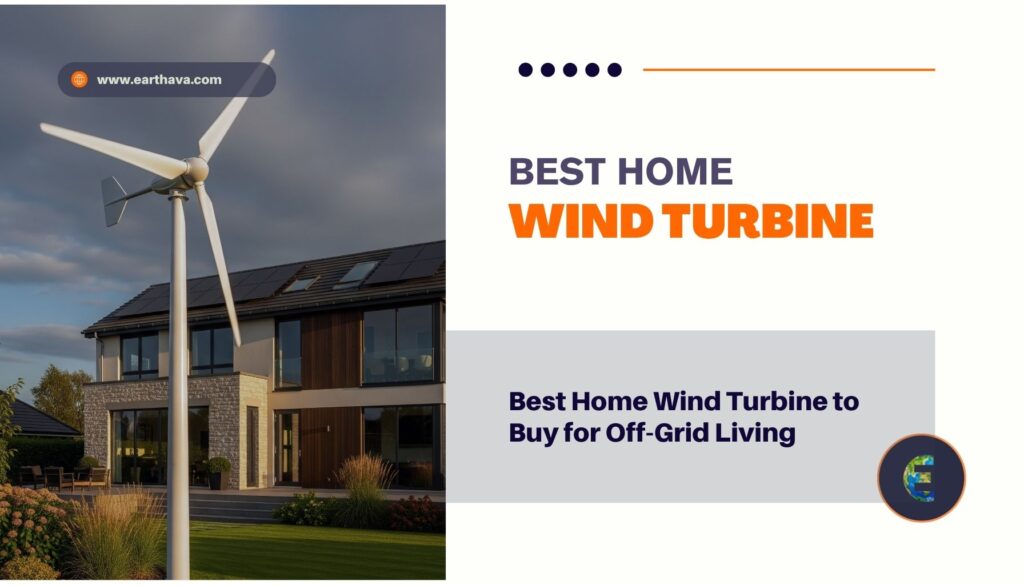
What is a Wind Turbine?
Wind turbines are electric generators that convert wind energy into clean, emission-free power. Although most large wind farms exist to power certain towns and communities, there are also smaller wind turbines for homes and homeowners. These small wind turbines can be installed on any part of your property to cover some or even all of your monthly energy needs.
How We Chose These Home Wind Turbines
We haven’t personally tested every turbine on this list. Instead, we looked at technical specifications, verified user reviews, and expert recommendations to create a trusted shortlist. Our goal is to guide you toward reliable options that meet real-world needs, not just what looks good on paper.
Top 3 Picks
🥇GOWE 3KW Grid-Tie Wind Turbine Generator
Summary
The GOWE 3KW wind turbine is one of many small-scale grid-tie options available online, often imported with little brand support or verified performance data. While its rated output looks promising, real-world reviews suggest these systems rarely deliver anywhere near their rated capacity unless placed in ideal, high-wind environments with proper tower height and system design. It might suit off-grid hobbyists or experimental setups, but most homeowners would see better ROI from solar power.
🥈HUIZHITENGDA 10,000 W Vertical Wind Turbine Generator Kit
Summary
Despite its 10 kW rating, this small vertical-axis wind turbine is unlikely to deliver anywhere near rated output in real-world conditions. Vertical-axis designs suffer from lower aerodynamic efficiency, minimal swept area, and structural drawbacks. While the kit is affordable and easy to install, numerous user and engineering critiques label similar models as underperforming and unreliable. In most cases, investing in proven solar PV systems will make more sense, unless you have unusually strong and consistent local wind conditions
🥉Fablestoryem 12000 W Maglev Vertical Wind Turbine Generator Kit
Summary
This Fablestoryem kit looks compelling at first glance, with high-rated power, a lightweight design, and plug-and-play appeal. However, like many small-scale vertical-axis turbines, real-world output often falls well short of advertised figures. The compact build, absence of performance validation, and critical feedback online point to limited practical value. Unless you’re in a consistently windy environment and treating this as a DIY experiment, solar alternatives still seem more reliable and efficient
The 10 Best Home Wind Turbines
A typical house usually requires a home wind turbine with a 5 kW generating capacity to meet all its energy requirements. A turbine that offers this much power must be around 13 to 18 feet in diameter and positioned in an area where strong winds often pass through. There are also plenty of smaller, cheaper turbines, but these variants produce less power and are less reliable than their more expensive counterparts.
1. GOWE: 3KW Wind Turbine Generator
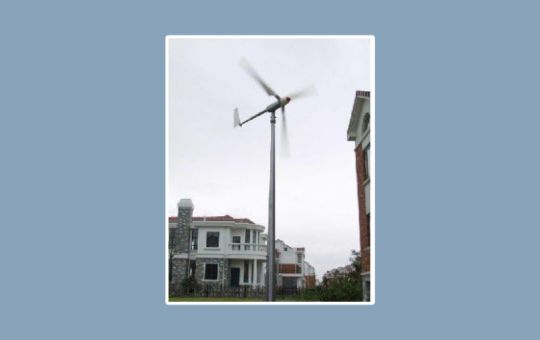
This isn’t a flashy, all-in-one wind gadget; it’s a serious piece of hardware meant for those who know their region’s wind profile well. The GOWE 3KW Grid Tie Wind Turbine is designed for one clear purpose: to convert strong, consistent wind into real, usable energy that feeds directly into your home’s power system. No batteries, no middleman, just direct-to-grid energy generation. Based on user reviews and specs, this model is a favorite among those looking to make a significant dent in their utility bills, especially in remote or coastal areas.
According to buyers and our research, the real draw here is the output. At 3,000 watts, this turbine isn’t meant for small, casual use. Many users noted that, when installed properly in a high-wind area, it delivers enough power to meaningfully offset daily energy consumption, running essentials like lighting, fridges, or backup systems with surprising consistency.
That said, there’s a tradeoff: setup. Multiple reviewers mentioned that the manual is confusing or poorly translated, and that mounting hardware is not included. So, unless you’ve done this before (or you’re working with a professional), expect a bit of a learning curve, not just with installation, but also understanding the inverter, connection points, and pole requirements.
This model isn’t ideal for city rooftops or light breezes. It’s for open landscapes and homeowners who are ready to commit to a long-term wind setup. If you’re already solar-equipped and looking to diversify your off-grid energy, this could be a smart addition. If you’re new to renewables, you might want to start smaller.
✅ Pros
- High 3,000W power output for grid tie-in
- Durable build for long-term performance
- Ideal for rural or coastal environments
⚠️Cons
- Poorly written installation guide
- Mounting hardware and pole not included
- Customer support is limited, according to reviews
Earthava’s Take: If you’ve got the wind, and the willingness to learn or hire help, the GOWE 3KW Wind Turbine offers real, measurable output. It’s not for the casual experimenter, but for the committed homeowner or off-grid enthusiast, it’s one of the few turbines at this price point that can actually keep up with daily needs. Just know that setup might test your patience, or your phone-a-friend list.
Specifications and Key Features
| Manufacturer | Gowegroup. |
| Weight | 2.2 pounds. |
| Watts | 3KW. |
| Voltage | 230V. |
| Number of Blades | 3. |
2. Pikasola: 400W 12V Wind Turbine
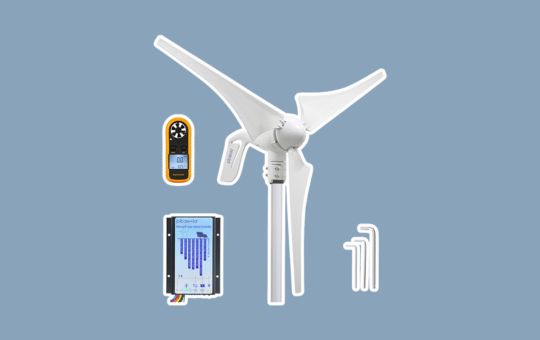
This one isn’t going to light up your entire house. The PIKASOLA 400W turbine is the kind of gear that quietly sits in the background of an off-grid life, powering lights in a cabin, keeping a battery topped up on a boat, or backing up a small solar setup when the clouds roll in. It’s for people who don’t just want to consume power, but want to understand how it works. And maybe even enjoy the process.
What makes this one stand out, and the reason it’s been showing up in a lot of early DIY setups, is the hybrid controller. Wind and solar in one package. It might sound basic, but that kind of flexibility matters when you’re living with the elements. No sun? No problem. Wind not cooperating? Solar steps in. According to people who’ve actually used it, that versatility alone makes the whole system feel more alive, more responsive. Like it’s working with you instead of just feeding off a grid.
That said, there are quirks. You’ll see a few reviewers mention the tail fin shaking loose or the mounting hardware needing extra reinforcement. Some say they had to rebalance the blades or tweak the controller a bit to get the most out of it. If you’re expecting industrial-level polish, this isn’t that. But if you don’t mind rolling up your sleeves, or even prefer knowing how every bolt fits together, you’ll probably respect it more because of those imperfections.
It’s not glamorous tech. It doesn’t boast big numbers. But it’s a stepping stone, a way to shift the way you think about power, even in small, quiet ways. Whether you’re setting up a tiny weekend retreat or just experimenting in your backyard, there’s something satisfying about feeling the wind and knowing it’s doing something. That you built something real with it.
✅ Pros
- Compact and beginner-friendly
- Hybrid controller supports both wind and solar charging
- Fair value for small off-grid projects
⚠️Cons
- Quality issues reported with tail and blades
- May require manual tuning for optimal performance
- Not suited for high-energy demand systems
Earthava’s Take: We won’t tell you this is the best turbine out there. But for the right person, the one who likes learning through doing, who doesn’t mind a little tinkering, who wants to feel in touch with their system, it might be exactly enough. Small, useful, humble. That’s kind of the beauty of it.
Product Specifications and key features
| Manufacturer | Pikasola. |
| Weight | 2.2 pounds. |
| Watts | 4KW. |
| Voltage | 12V. |
| Number of Blades | 3. |
| Material of Blades | Nylon Fiber. |
| Start Wind Speed | 2.5 m/s. |
| Rated Wind Speed | 12 m/s. |
3. HUIZHITENGDA: 10,000W Vertical Wind Turbine Generator Kit
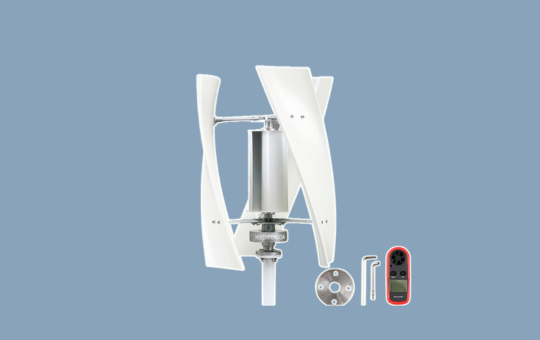
This is not the kind of wind turbine you buy on a whim. The HUIZHITENGDA 10,000W vertical model is a serious piece of equipment, the kind you plan for, make space for, and build into the bigger picture of how your home, cabin, or hybrid solar–wind system will run. It’s best known for its vertical-axis design, which isn’t just for looks; it’s built to catch wind from any direction, something horizontal turbines can struggle with if the weather’s unpredictable.
One thing that really stands out, and it’s mentioned again and again in technical forums and reviews, is the rated capacity. Ten kilowatts, on paper, is enough to make a real dent in household energy needs when the wind is steady. For off-grid users in coastal or open rural areas, that’s not just backup power; it’s the backbone of a renewable setup. Add to that the 220V output, and you’ve got a system that integrates with heavier-duty appliances more easily than the smaller hobbyist turbines.
That said, this isn’t a plug-and-play solution. According to users, installation can be challenging if you’re not already familiar with mounting and wiring large wind systems. The unit’s size and weight demand a stable, well-prepared base, and the performance will only shine in areas with consistent, strong winds. If you’re somewhere with mild breezes, you might never see it reach its full potential.
This makes the HUIZHITENGDA ideal for those who live in windy coastal regions, open plains, or even on large properties where wind speed stays high. It’s for someone who’s ready to invest in a large-scale renewable system and understands that real output depends on site conditions as much as the specs on the page.
✅ Pros
- Vertical-axis design works with wind from any direction
- High-rated capacity for serious off-grid or hybrid systems
- 220V output for broader appliance compatibility
⚠️Cons
- Installation complexity and weight require proper planning
- Peak output is only achievable in consistently windy locations
- It is not a system you completely rely on; it is more for backup.
Earthava’s Take: This turbine is overkill for most weekend cabin setups, and that’s exactly the point. It’s built for people who are committed to generating a large share of their power and who have the wind resources to back it up. If you’re in the right location and ready for the installation work, it’s a long-term investment that could become the beating heart of your renewable system.
Product Specifications and Key Features
| Manufacturer | HUIZHITENGDA |
| Watts | 10000W |
| Voltage | 220V |
| Number of Blades | 3 |
| Blades height | 0.75m |
| Start Wind Speed | 2.0 m/s |
| Rated Wind Speed | 10 m/s |
4. RocoReny 500W Vertical Axis Wind Turbine
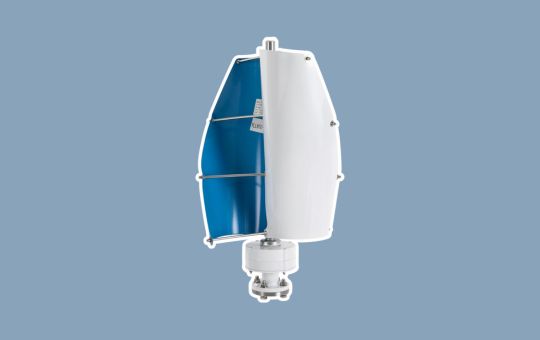
The RocoReny 500W vertical wind turbine isn’t built to power an entire home. It’s designed for smaller-scale renewable setups where reliability, portability, and low start-up wind speeds matter more than brute force. You’ll often see it mounted on a boat, a terrace, or as part of a hybrid system on an RV or off-grid cabin.
What it’s best known for is its compact, two-blade vertical-axis design. Based on reviews, this shape and orientation make it easier to capture wind from changing directions without the need for constant repositioning. The permanent magnet generator is another plus; it tends to produce smoother output with less mechanical noise, something boat owners and small property users often appreciate.
The standout feature, in our research, is how quietly it runs. According to users, even when the wind picks up, the hum is minimal compared to some horizontal-axis turbines. That can make a real difference if it’s installed near living or sleeping areas.
The trade-off? At 500W capacity, it’s not going to keep energy-hungry appliances running for long. If your expectations are aligned, think lighting, charging electronics, maybe supplementing a solar setup, it’s great. But as a sole power source for larger needs, it’s not built for that.
This makes the RocoReny ideal for marine users, RV travelers, or anyone with a modest off-grid demand who values quiet operation and low-maintenance performance over maximum output.
✅ Pros
- Vertical-axis design works well with shifting wind directions
- Quiet operation, even in stronger winds
- Compact size for boats, terraces, and small spaces
⚠️Cons
- Limited capacity for larger power needs
- Not suited for low-wind inland areas without a hybrid backup
Earthava’s Take: The RocoReny 500W isn’t about replacing the grid; it’s about adding a dependable, low-noise renewable boost to a small-scale system. If you’re sailing, traveling, or living light, it’s a practical way to make the most of the wind without the mechanical fuss. Pair it with solar and a battery bank, and it becomes part of a versatile, resilient little power network.
Product Specifications and Key Features
| Manufacturer | RocoReny |
| Weight | 9.84 pounds |
| Watts | 500W |
| Voltage | 24V/12V |
| Number of Blades | 3 |
| Rated Wind Speed | 13m/s |
| IP rate | 67 |
5. ZHPPED: 10,000W Magnetic Levitation Upright Wind Turbine Kit (24V)

On paper, the ZHPPED 10,000W Magnetic Levitation Upright Wind Turbine is a beast, tall, vertical blades, a design that uses magnetic levitation to reduce friction, and a headline number that makes you wonder if you could finally tell your electric company goodbye.
But here’s the honest part most spec sheets won’t tell you: as always, and said in previous reviews, unless you live in a place where the wind is both strong and steady, that 10,000W figure is more aspiration than reality. Based on reviews and our own research, real-world performance, especially in backyards hemmed in by trees or rooftops shielded by buildings, falls well below the max. That’s not a ZHPPED flaw; it’s just the nature of home wind. Wind is unpredictable, and turbines don’t produce when the air is still.
The standout here is that maglev system. It’s not just a flashy buzzword; it means less friction in the rotor, so the turbine starts turning at lower wind speeds and runs quieter than some traditional models. If you’ve ever been near a chattering, rattling windmill on a blustery day, you’ll know why that matters. And the included waterproof charge controller adds a layer of durability for marine or harsh-weather installs.
Still, I’d never tell someone to put this up expecting it to be their one and only power source. According to users, the happiest owners are those who treat it as a supplement to solar or grid power, a way to make use of windy days rather than a lifeline. It’s for the hobbyist, the off-grid experimenter, or the homeowner with a wide-open plot of land and the curiosity to see what wind can really give them.
✅ Pros
- Magnetic levitation allows smoother, quieter starts
- Lower wind speed threshold than some turbines
- High-rated capacity for peak windy days
- Weather-resistant charge controller included
⚠️Cons
- Actual daily output is far lower than the rated maximum for most sites
- Requires optimal wind exposure and proper installation
- Not suitable as a sole power source for a typical home
Earthava’s Take: The ZHPPED isn’t a miracle machine, and that’s fine. It’s a tool. In the right setting, with the right expectations, it can turn idle gusts into usable energy and bring you a little closer to self-reliance. But as with all home wind, it works best when it’s part of a bigger, balanced energy plan. Think of it as catching extra wind in your sails, not the engine that drives the whole ship.
Product Specifications and Key Features
| Manufacturer | ZHPPED |
| Height | 12m |
| Watts | 10000W |
| Voltage | 12/24/48V |
| Number of Blades | 3 |
| Starting wind speed | 3 m/s |
| Rated wind speed | 12 m/s |
6. Automaxx Windmill 600W Wind Turbine Generator Kit (12V/24V)
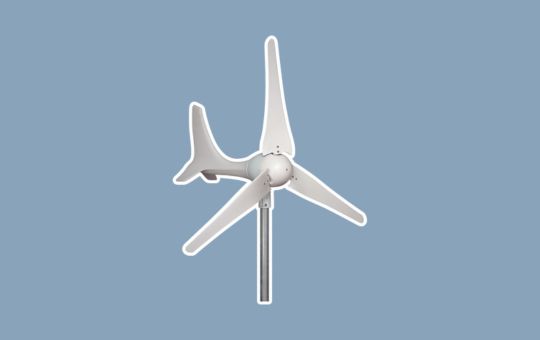
The Automaxx 600W is one of those setups made for people who like the idea of harnessing the wind themselves, without waiting on a utility company or a contractor to make it happen.
It comes as a complete kit, controller included. Not just any controller, but an MPPT with a live readout of volts, amps, and watts. That might sound like a minor detail, but based on reviews, having those numbers right in front of you changes how you interact with your system. You see exactly when the wind’s worth celebrating, and when it’s just teasing you.
The thing people talk about most, though, is the braking system. You get two ways to slow or stop the turbine: an automatic brake for sudden gusts, and a manual option if you want to take control yourself. For folks in windy coastal areas or open plains, that’s a genuine comfort. You’re not just hoping the turbine will survive a storm. You can step in if you need to.
Still, this is where the honest part comes in. No matter how polished the specs look, a 600W home wind turbine isn’t going to carry an entire household’s energy needs. It’s at its best when it’s part of a team, paired with solar panels, or feeding into a battery bank as a backup. In low-wind areas, output can be modest. In high-wind zones, you’ll see more, but it’s never truly “set it and forget it.” Wind is fickle.
If you’ve got the right site, open exposure, steady breezes, maybe a cabin or an RV spot you visit often, this kit can give you a steady stream of extra power. Enough to keep essentials charged, lights on, maybe even take the edge off your generator fuel bill. But if you’re dreaming of going fully off-grid on wind alone, you’ll want to rethink or size up considerably.
✅ Pros
- MPPT controller with real-time power readout
- Dual braking for safety and control
- Compatible with both 12V and 24V setups
- Designed for DIY installation
⚠️Cons
- Wind-dependent, with lower output in calmer areas
- Needs a good mounting location for best performance
- Not suited as a stand-alone power source for most homes
Earthava’s Take: The Automaxx 600W isn’t a magic bullet, but in the right conditions, genuinely useful. It’s for people who like being hands-on with their energy and don’t mind that nature sets the pace. Think of it as an extra pair of hands on your renewable energy team, quietly working whenever the wind shows up.
Product Specifications and Key Features
| Manufacturer | Pikasola |
| Weight | 26.5 pounds |
| Watts | 600W |
| Voltage | 12/24V |
| Number of Blades | 3 |
| Blade Material | Nylon Fiber |
| Rated Wind Speed | 13 m/s |
7. FLTXNY POWER: Wind Turbine 2000W AC 48V Generator Kit with MPPT Controller
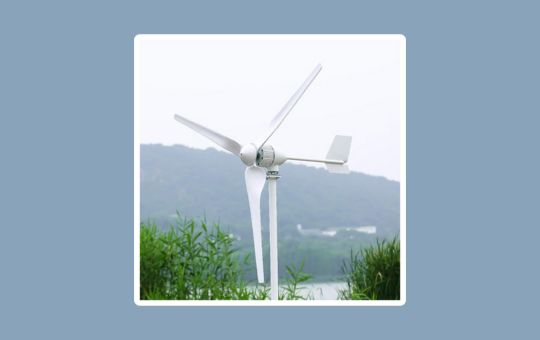
The FLTXNY POWER 2000W wind turbine leans into that feeling; it’s a high-output, 3-blade horizontal-axis system that aims to offer real off-grid support, not just spin prettily in the breeze. Based on what we’ve seen from reviews, specs, and side-by-side comparisons, it’s one of the more serious players in the DIY wind space, but that doesn’t mean it’s without quirks.
Let’s start with what makes this one stand out: its pairing of a 2000W three-phase AC generator and a smart MPPT controller. The tech behind that combo seems to be doing its job. According to multiple users, it manages charging fairly efficiently and handles gusty conditions with a bit more grace than expected. That’s something. The blades are Nylon, so they’re light but tough, which helps with lower start-up speeds and longevity, especially in harsh weather.
But, and this is the part we think matters most, it’s still a home wind turbine. That means you’re at the mercy of your wind conditions. If you live somewhere the trees barely rustle, no amount of wattage on the box will save you. Several reviewers said it’s fantastic when mounted high in open areas, but almost ornamental if you try to tuck it behind a shed or squeeze it into a suburban lot. This isn’t a backup system you can blindly count on. It’s a supplement, not a guarantee.
It’s best suited for people who already understand off-grid living. Folks with boats, remote cabins, or hobby farms where the wind has room to move, and where solar alone doesn’t always cut it. And it’s particularly useful if you already have a battery bank you’re charging and just want a bit of extra input when the sun disappears.
Setup isn’t complicated if you know what you’re doing, but it’s also not for the faint of heart. Think: tower mounts, grounding rods, load balancing, all the stuff that makes or breaks a system like this. But for those who enjoy the process, or at least respect the learning curve, this turbine can be a solid piece of your energy puzzle.
Earthava’s Take: FLTXNY POWER 2000W might deserve a look. Just be honest with yourself about the wind where you live and what you expect this system to do. It’s not magic. But when conditions are right, it can quietly feed your batteries, complement your solar, and remind you that sometimes.
✅ Pros
- High 2000W rated power output
- Includes MPPT controller with overcharge protection
- Durable blades, low cut-in speed
- Compatible with 48V battery systems
⚠️Cons
- Performance drops dramatically in poor wind locations
- Needs an elevated, exposed installation to be effective
- Not a standalone power solution
Product Specifications and Key Features
| Manufacturer | FLTXNY POWER |
| Weight | 66 pounds |
| Watts | 2000W |
| Voltage | 24/48V |
| Number of Blades | 3 |
| Blade Material | Nylon Fiber. |
| Start Wind Speed | 3 m/s |
| Rated Wind Speed | 17m/s |
8. Fablestoryem 12000 W Maglev Vertical Wind Turbine Generator Kit
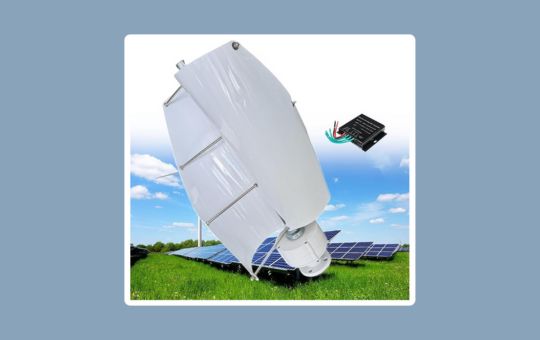
Maybe you’ve noticed how some wind turbines look more like art installations than practical gear. This one is different, straightforward, functional, and a little unapologetic. The Fablestoryem 12,000 W turbine lays out its specs boldly: five blades, an aluminum alloy body, a low-noise maglev design, and a voltage range from 12V to 220V. It won’t win any design awards, but it feels built to work.
Our research shows the star feature is the coreless permanent magnet generator with a maglev setup. That means lower starting wind speeds, smoother rotation, and less friction. People regularly mention in reviews that it begins to spin even when the air is barely there, and runs quieter than you’d expect for such capacity.
The drawback? It’s still a turbine, and turbines live and die by the wind. Most users report that unless your property is exposed to strong, consistent breezes, the system underdelivers. That 12kW number? Realistically, many users see a fraction of that because in most home setups, wind is unpredictable, sometimes productive, and often just a tease.
So who might it suit? If you have a boat, a remote cabin, or an open rural spot, and you already use solar or another power source, the Fablestoryem model could be a worthy supplement. It’s especially appealing to people who enjoy the idea of engaging with their energy system. If you’re looking for a quiet partner to catch gusts when they come, this is a thoughtful pick.
Earthava’s Take: There’s something honest about a turbine built without frills, built to spin when the wind shows up. The Fablestoryem 12 kW kit feels like that, capable but conditional. If you’re in a windy spot and patient enough to tame the installation, it can reward you. If you expect it to power your life on still days, it won’t, and knowing that up front makes all the difference.
✅ Pros
- High maximum output rating (12 kW)
- Wide voltage compatibility for diverse setups
- Low-startup maglev design, gentle, quiet, efficient
- Strong build with composite materials and autotracking blades
⚠️Cons
- Performance highly wind-dependent
- Likely to underwhelm in average residential settings
- Requires serious planning, tower height, and setup skill
Product Specifications and Key Features
| Manufacturer | Fablestoryem |
| Color | White |
| Watts | 12000W |
| Voltage | 12/24V |
| Number of Blades | 5-blade vertical-axis design |
| Generator protection grade | IP67 |
| Start Wind Speed | 1.5 m/s |
| Rated Wind Speed | 10 m/s |
9. WATEBATH 600W Wind Turbine Generator Kit
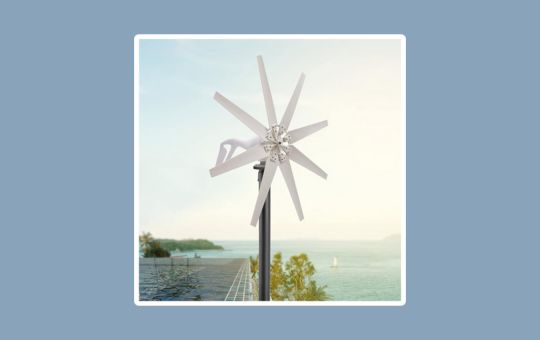
The WATEBATH Wind Turbine Generator Kit, a 600W, 12V unit with eight blades and its own charge controller, is one of those products that sits right in the middle of that conversation. It’s not going to take you fully off-grid on its own. It’s not meant to. But it can be a surprisingly useful piece of the puzzle for the right person and the right setup.
From a specs standpoint, it’s a compact system designed for low- to medium-wind environments. The eight-blade rotor is built to capture more energy from lighter breezes, and the included charge controller means you can integrate it into a hybrid setup alongside solar fairly easily. According to users, the build quality is decent for the price, the blades are lightweight but sturdy, the housing feels weather-resistant, and installation isn’t overly complex if you’re comfortable with basic tools and wiring.
The standout strength here? Quiet operation. Several reviewers mentioned that even when it’s spinning in higher winds, it produces more of a soft whoosh than a mechanical grind. For anyone living on a boat, in a rural home, or near neighbors who value their peace, that matters.
The drawback, though, is the same one we see with almost every home wind turbine in this price bracket: inconsistent output. Unless you live in a reliably windy location, this turbine will spend a lot of time idle or barely turning. In our research, users reported seeing decent charging during storms or in steady coastal winds, but in calm inland conditions, production drops off sharply. This is where the realistic conversation comes in, as a hobbyist tool or as a backup to your main power sources (solar, battery storage, grid), it’s great. As a stand-alone system? You’ll be disappointed.
Based on reviews, this model works best for tinkerers, liveaboard sailors, off-grid cabins, and anyone who enjoys experimenting with renewable energy setups. It’s light enough to mount without heavy lifting gear, and it integrates well into hybrid systems, so you can let it sip power from the wind while your panels work on sunny days.
✅ Pros
- Quiet operation, even in stronger winds
- Eight-blade design helps in low-wind conditions
- Includes a charge controller for easy integration
- Affordable entry point for wind hobbyists
⚠️Cons
- Power output is heavily dependent on location and wind consistency
- Not a realistic sole power source for a home
Earthava’s Take: If you approach the WATEBATH 600W with the mindset that it’s a supplemental power tool, you’ll probably be pleased. If you expect it to shoulder the full load of your home’s energy needs, you’ll be frustrated. Small wind systems can’t match solar’s predictability for most locations, but they can still be satisfying to watch spin and contribute those extra watts on a breezy day. Think of it as a sidekick, not the hero, and you’ll get along just fine.
Product Specifications and Key Features
| Manufacturer | WATEBATH |
| Watts | 600W |
| Voltage | 12V |
| Number of Blades | 8 |
| Material | Aluminum |
| Start-up wind speed | 3m/s |
| Rated wind speed | 13m/s |
10. ViaGasaFamido: 800W Wind Turbine Generator
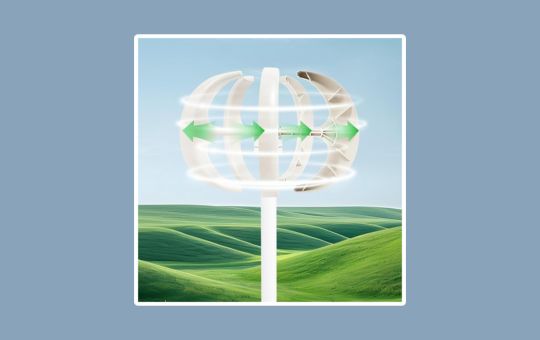
The HinLIaDa 12V 600W Lantern Wind Turbine Generator is a vertical-axis turbine with five blades, designed to capture wind from any direction. On paper, that makes it more forgiving in shifting wind conditions than the typical horizontal-blade style. It comes bundled with a controller, which means you’re not starting from scratch on the wiring side.
According to reviews, the standout feature here is the ease of setup. The vertical axis design means you don’t have to fuss over pointing it into the wind, and the included controller is simple enough for someone without an electrical engineering degree to figure out. For someone experimenting with renewable energy on a boat, at a campsite, or even in a backyard, that’s appealing.
That said, we need to be realistic about what this is and what it isn’t. In our research, one recurring theme is that home wind turbines like this are “as we always state in every wind turbine,” not a primary energy source unless you live in an area with consistently high winds. Even then, they tend to supplement, not replace, other systems like solar panels. Users mention that output can be inconsistent, and in lower wind regions, it may spend more time spinning gently than delivering meaningful power. Think of it as a backup trickle charger for batteries, not as the thing that’s going to keep your whole house running.
From what we’ve seen, the ideal user for the HinLIaDa kit is someone who enjoys the process as much as the result. If you’re the sort of person who likes to see a small wind turbine whirring away on a cabin roof, charging a battery for your lights or electronics, it’s a good fit. If your expectation is a plug-and-forget solution for heavy loads, you’ll likely be disappointed.
Earthava’s Take: We like the HinLIaDa for what it is, a lightweight, approachable way to start experimenting with wind power. It’s not a replacement for your main energy source, but in the right location, it can help keep batteries topped up and give you a taste of what small-scale wind energy can do. For hobbyists and off-grid enthusiasts, it’s a satisfying project.
✅ Pros
- Vertical axis design works with wind from any direction
- Compact and relatively easy to install
- Comes with its own controller
- Suitable for boats, RVs, cabins, or camping setups
⚠️Cons
- Output is heavily dependent on wind consistency
- Not a full-scale energy solution
- Some reports of needing tweaks or adjustments for optimal performance
Product Specifications and Key Features
| Manufacturer | HinLIaDa |
| Watts | 600W |
| Voltage | 12V |
| Number of Blades | 5 |
| Blades Material | Nylon fiber |
| Start-up Wind Speed | 2m/s |
| Rated Wind Speed | 13m/s |
What are the advantages of using a home wind turbine?
Advantages of Using a Home Wind Turbine for Sustainable Energy Generation:
Renewable Energy Source
Among the major benefits of a home wind turbine, the power generated comes from a renewable source of energy – wind. In comparison to fossil fuels, which have limited supplies and contribute to environmental pollution, wind can be termed a renewable source of energy that will never run out for us. If a homeowner utilizes wind instead of non-renewable resources in energy generation, it would be less harmful to the environment.
Cost Savings
In the long run, installing a home wind turbine can result in big expense savings. Although wind energy might be more expensive than most conventional energy sources, it is practically free. After the turbine has been turned on it produces clean energy without additional fuel expenses. It can sell such a surplus to the grid and therefore could cover or wipe out one’s monthly bills for electricity use.
Energy Independence
The third benefit of home-based wind turbines is energy efficiency. Homeowners will be in a position to lower their dependence upon the national grid as well as utility companies by producing electricity on-site. This is especially important for those living in rural areas and others who often experience power failures. Using a home wind turbine, homeowners are assured of a regular source of energy in their homes, leading to continuity of duties at home, free from any worries.
Environmental Benefits
Another environmental advantage of using home wind turbines is that such turbines cause no harm to animals and birds, thus, they do not destroy the bioc ecosystem as much as other types of turbines. In addition, wind is a sustainable and green form of fuel. Wind power is more environmentally friendly than burning fossil fuels. This reduces harmful gases that cause global warming. Furthermore, wind energy is cleaner in two ways it does not form smoke, nor can it contaminate air and water as such, making it preferable for energy generation.
Easy to Install, Maintain, and Repair
Wind home turbines are designed in a way that should be operated with ease, just like any other household device. Typically, most of these suppliers give very elaborate set-up guidelines, and with having few skills in hand along with minimal equipment, homeowners establish wind turbines on their own, without professional care. Wind turbines also use fewer components that require a lesser amount of maintenance when compared with other renewable energy units like solar panels. Sometimes, homeowners can perform simple replacements or repairs, thereby reducing costs and time.
What is the lifespan of a home wind turbine?
For a home’s clean energy, an ideal option is a windmill. It utilizes the wind’s force and has a low environmental impact. It is crucial to know the life expectancy of a home wind turbine once you intend to buy one.
Regular Maintenance
Several factors determine or affect the life span of home wind turbines. In general, if your home wind turbine is well-maintained and correctly installed, it could work for around 20 years or so. Nevertheless, frequent upkeep and replacement of some parts can make this machine last longer.
Construction
The quality of construction is one important characteristic affecting the life of a home-based wind turbine. Purchasing an excellent turbine from a trustworthy company makes it possible for one to buy a product that has been designed to endure through the ages. Turbines of low-quality material construction may have a short life span, as they are cheaper.
Longevity
Maximizing the longevity of home wind turbines depends on regular maintenance. The turbines are routinely monitored for performance, including routine checkups on blades, gearbox, and the generator. Lubrication of moving parts and regular cleaning are also necessary to prevent any potential issues.
Occasionally, replacement of some components might be necessary in the lifetime span of the home wind turbine. The blades should be monitored for signs of wear and damage. Blades should be replaced whenever any signs of deterioration are noticed to ensure that, the turbine operates effectively all through.
Location
The location and climate can also influence the lifespan of the home wind turbine. Wind turbines that are placed in locations where there is constant wind flow and strong breeze have a higher tendency to last longer than those found where the wind blows intermittently and is not always strong enough. Salt air can accelerate the degeneration of turbine elements in the sea-shore region.[
Besides, there are ongoing developments in technology and turbine construction. As such, new models could have a more extended lifespan as well as better quality in comparison with old ones. Homeowners also need to be updated on new and best practices regarding wind turbines to ensure that their purchasing decisions are well-informed.
To understand whether it is necessary to seek approval from local authorities before installing a home wind turbine, here are some helpful facts to keep in mind as you move towards a greener future.
Understanding Local Regulations:
The importance of local regulations about renewable energy, such as home wind turbines, includes ensuring the environment’s safety, the working environment, and aesthetic aspects. These regulations differ in different regions, hence you need to be conversant with yours.
1. Zoning and Land Use Regulations: The local authorities also apply zoning and land use restrictions that guide where and how the turbines should be set. These serve to ensure that negative effects are not felt in nearby properties, landscapes, or wildlife habitats. Therefore, you might have to refer to zoning maps or talk to your local planning department so that you can learn whether your property needs to meet some prescribed standards before you invest in a new barn.
2. Permitting and Licensing: Home wind turbine installation in many areas is subject to permitting or licensing requirements. Safety and quality of the project are ensured by these permits to ensure conformity with the standards and electrical codes, and structural integrity. The absence of required permits can have legal consequences resulting in eviction of the turbine.
3. Environmental Impact Assessments: The approval of a home wind turbine in some jurisdictions may require the carrying out of an environmental impact assessment. The environmental impact analysis looks at the expected results, such as noise, habitat disruption, and aesthetics. This ensures that the process is done responsibly concerning the environment, as well as avoiding environmental degradation of the surrounding ecosystem.
Why Obtaining Permission is Important:
1. Legal Compliance: It is a requirement for you to get approval from the local council before you set up your home wind turbine because it should be legitimate. It is important to note that ignoring or refusing to follow set local regulations may attract fines, penalties, or other legal problems that are very expensive to handle.
2. Safety Considerations: Home wind turbines constitute very complicated equipment and wiring. You acquire the consent so that it goes on through set safety regulations as well as codes. It ensures that there are no chances of accidents, fires, or other safety concerns.
3. Protection of Surrounding Environment: There are some local regulations, for instance, that shield the environment around it, such as neighboring property and natural habitats.ҽ Obtaining permission ensures that your community looks good and there are no repercussions for disturbing the environment.
How to Obtain Permission:
1. Research Local Regulations: First of all, seek information about laws related to it, installation requirements, and other important issues. Contact your local planning officer for information on zoning, licensing, and other permit necessities.
2. Consult with Professionals: If in doubt about the guidelines and/or the installation procedure, you should always seek professional installation guidance. These include turbine manufacturers, local contractors that deal with home turbine installation, and renewable energy consultants. They will give you good counsel and see to it that you obtain every necessary detail before the installation.
3. Submit the Application: One should then apply to the collection of all necessary data and consultations with professionals concerning installing a home wind turbine. This usually means filling in a questionnaire and giving project reports, site plans, structural designs, and the required amounts of money.
4. Follow the Approval Process: You will thereafter forward the application to them for approval. A planning, building, environmental, or any other relevant department may undertake such a review. It is imperative always to have your facts in hand in case it occurs that you may be pressed further to explain why and how.
5. Obtain Permits and Approvals: If your application gets approved, there will come a range of permissions and approvals that will help you install your home wind turbine unit. Also bear in mind that you will be bound by any conditions that formed a condition for approval i.e., prohibitions on noise, and setbacks from neighboring premises.


